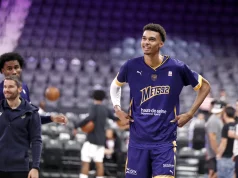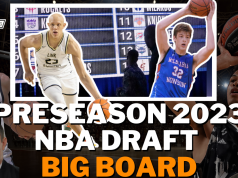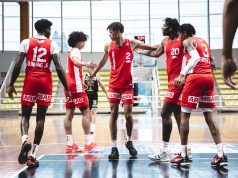On the most recent episode of “The Haberstroh Show”, Daryl Morey mentioned that having poor defensive rebounding numbers strongly affects a team’s defense: “If you give teams extra possessions, that’s the worst thing a defense can do… worse than anything else, worse than fouling, worse than giving up high percentage shots, worse than anything else,”(https://art19.com/shows/the-haberstroh-show/episodes/430a210f-eafe-4e2c-b17b-7d60f8b3bdc2 at the 27:38 mark). San Antonio Spurs’ opponents’s offensive rebounding percentage for the season looks good at 25.2%, the 10th best mark in the league; however, over the past month, the Spurs’ defensive rebounding has been worse.
Since November 4th, Spurs’ opponents have had an offensive rebounding percentage of 26.2%, which ranks 17th in the league in that time. Between the loss to the Minnesota Timberwolves and the loss to the Utah Jazz, the Spurs’ opponents rebounded 31.3% of their own field goal and free throw misses, 27th worst since last Wednesday. Over the last month, Spurs’ opponents are scoring 21.9 points on putbacks per 100 field goal attempts or their own free throws rebounded, per Cleaning the Glass, the 26th most for that period.
Pau Gasol, who is currently out, has been the Spurs best rebounder by percentage this season, rebounding 26.6% percent of opponent’s missed field goal attempts. Rudy Gay is the best rebounder by position, rebounding 20.3% of opponents’s missed field goal attempts, better than 92% of forwards. The Spurs are elite at grabbing defensive rebounds when Gay is playing small forward, allowing opponents to rebound 21.3% of their misses, in the 95th percentile for all lineups in the NBA. Unfortunately, these lineups are poor in other areas defensively, so the Spurs have a worse defensive rating with these lineups.
Lineups that feature Dante Cunningham at small forward also prevent opponents from grabbing offensive rebounds, allowing their opponents to rebound only 21.7% of their own misses. Unfortunately, Spurs opponents’ are shooting so well against these lineups, 57.1% effective field goal percentage, that the Spurs are worse defensively.
Dejounte Murray’s season ending injury hurt the Spurs here. The Spurs were able to hold their opponents to a low offensive rebound percentage and a low effective field goal percentage with Murray on the court last season. Danny Green and Kyle Anderson, who left in the offseason, did well on defense for the Spurs last season as well, but even with both of them off the court, the Spurs allowed opponents to rebound only 23.0% of their own field goal misses last season. Spurs’ opponents had an effective field goal percentage of 48.5% against lineups that featured Murray without Green or Anderson last season.
Currently, the biggest problem with the Spurs’ defense is how well their opponents are shooting against them. Improving defensive rebounding won’t fix that problem, but over the past month, defensive rebounding has become a bigger problem. Both of these categories will need to improve if the Spurs want a better defense, and there is reason to believe that the return of Murray next season will help greatly.
Stats from cleaningtheglass.com.






